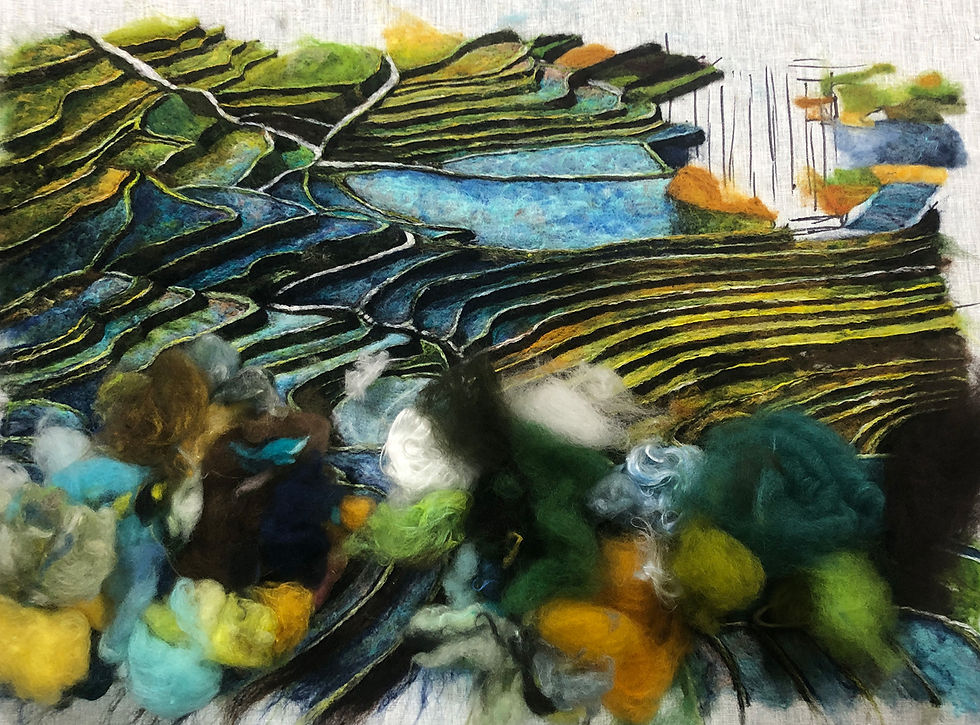From ancient traditions to artistic wonders
- Sarah Ritchie
- Jun 6, 2023
- 2 min read

As a fibre artist, I often get asked how I convert wool and other natural fibres into a ‘painting’. The answer is via the use of needle-felting.
In the realm of fibre arts, where ancient techniques meet modern creativity, needle felting is a testament to the timeless charm of working with wool. Born out of the rich tradition of wet felting, needle felting has evolved into a beautiful art form that allows artisans to breathe life into their imagination through intricate sculptures and textile creations.
The origins of felting can be traced back to the dawn of civilisation when our ancestors discovered the remarkable properties of animal fibres. Wet felting, which emerged around 6500 BCE, combined wool with moisture, heat, and agitation to create fabric. This ancient practice, prevalent across cultures, played a crucial role in clothing and shelter production.
While wet felting flourished for centuries, in the late 19th century, needle felting began to make its mark. Initially used for mending damaged felted items, needle felting gradually gained recognition as a craft technique. With specialised barbed needles, artisans could sculpt three-dimensional objects, adorn textiles with intricate designs, and unlock boundless creative possibilities.
The late 20th century saw a surge in the popularity of needle felting as artists and enthusiasts explored the medium’s vast potential. Online communities and social media platforms fueled its growth. Knowledge sharing inspired a new generation of needle-felting fans, and the development of diverse needle types and sizes facilitated enhanced detailing and colour blending.
Today, needle felting has become a much-loved art form with many applications. Artists and crafters have embraced this technique to create unique and awe-inspiring works of art. From delicate animal sculptures and intricate jewellery, needle felting offers a new (yet very old) medium for artists to breathe life into their visions and unleash their creativity upon wool fibres.
The magic of needle felting lies in the transformative process of the wool fibres. With skilful hand movements and the piercing of barbed needles, loose wool is sculpted into solid structures which can be either 3-dimensional or flat where colours are blended seamlessly into intricate patterns and textures. The versatility of needle felting extends beyond sculptures and embellishments as artisans create textile art.
Needle felting continues to captivate and inspire through its artistic and practical applications. From its humble beginnings in wet felting to its current position as a dynamic art form, needle felting has charmed artisans and enthusiasts worldwide. It breathes life into wool, transforming it into extraordinary sculptures and textile masterpieces. With needle felting, the creative possibilities are boundless.

Comments